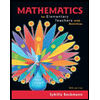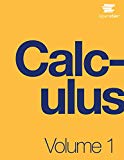
To calculate: The number of 100-gram units of each ingredient in a Greek salad and convert to the kitchen with the help of the table.
Answer to Problem 1CE
Solution:
About 12.41 gram of carbohydrates when the number of 100-gram units of feta cheese is .243, the number of 100-gram units of lettuce is 2.375, the number of 100-gram units of salad dressing is .3125 and the number of 100-gram units of tomato is 1.087.
Conversion of ingredients into the kitchen is:
Explanation of Solution
Given:
The salad should less than 260 calories, and it weighs less than 400 grams and further dressed with at least 2 tablespoons. Calcium should over 210 milligrams, protein should over 6 grams.
Conversion of ingredients of various food that is listed in the tabular form:
Food |
Serving size |
Beef |
|
Egg |
|
Feta Cheese |
|
Lettuce |
|
Milk |
|
Oil |
|
Onion |
|
Salad Dressing |
|
Soy Sauce |
|
spinach |
|
Tomato |
The amounts of calorie and nutrients are per 100 grams for the ingredients are listed in the form of a table:
Nutrient (units) |
Feta cheese |
Lettuce |
Salad Dressing |
Tomato |
Calories (kcal) |
263 |
14 |
448.8 |
21 |
Calcium (g) |
492.5 |
36 |
0 |
5 |
Protein (g) |
10.33 |
1.62 |
0 |
.85 |
Carbohydrates (g) |
4.09 |
2.37 |
2.5 |
4.64 |
The constants in the weight constraint are 4, not 400 grams.
Formula used:
Calculation:
Consider maximization problems and formulate into system of linear equations.
Take
Consider the amounts of calorie and nutrients is per 100 grams for the ingredients are listed in the form of a table:
Nutrient (units) |
Feta cheese |
Lettuce |
Salad Dressing |
Tomato |
Calories (kcal) |
263 |
14 |
448.8 |
21 |
Calcium (g) |
492.5 |
36 |
0 |
5 |
Protein (g) |
10.33 |
1.62 |
0 |
.85 |
Carbohydrates (g) |
4.09 |
2.37 |
2.5 |
4.64 |
Take,
So, the objective function is:
Salad should less than 260 calories, so the constraints for calories from the above table is:
Calcium should over 210 milligrams, so the constraints for calcium from the above table is:
Protein should over 6 grams, so the constraints for protein from the above table is:
The constants in the weight constraint are 4 so the constraints,
Consider the conversion table,
Conversion of ingredients of various food that is listed in the tabular form:
Food |
Serving size |
Beef |
|
Egg |
|
Feta Cheese |
|
Lettuce |
|
Milk |
|
Oil |
|
Onion |
|
Salad Dressing |
|
Soy Sauce |
|
spinach |
|
Tomato |
Salad dressing is at least 2 tablespoons which is
As it is considered the number of 100-gram units therefore for 31.25 grams,
And,
So, the constraints for salad dressing is:
Therefore, formulate the problem which is:
Maximize,
Subject to,
And,
Use two stages method to solve the maximization problem, then there are various steps which have to follow:
Step (1): Modify each equation constraint by an equivalent pair of inequality constraint
Step (2): Write each constraint with a positive constant.
Step (3): If minimization problem then converts into maximization by replace
Step (4): Add or subtract surplus variables according to the need of the constraints into equations.
Step (5): Write initial simplex table.
Step (6): Find a basic feasible solution if a solution exists which is stage I.
Step (7): If basic feasible solution found then do the simplex method further which is a stage and get the optimal solution.
Further, to convert linear inequality into the linear equation then take a slack variable and surplus variable which is done by add and subtract a non-negative variable to each constraint.
If linear equality has less than or equal to sign then use slack variable by add as the equation is less than or equal to the value if it is equal then the slack variable is zero.
If linear equality has greater than or equal to sign then use surplus variable by subtract as the equation is greater than or equal to the value, if it is equal then the surplus variable is zero which is:
And,
Where
Then rewrite constraints by add or subtract the non-negative slack and surplus variables which are:
Maximize,
Subject to,
And,
Then, convert the linear programming into a system of linear equations in which all the coefficients of variables are written on the left of the equal sign, and the constants are on the right then convert the objective function into linear equations which are:
Then, write the constraint and objective function into the augmented matrix which is in the form of a simplex table.
Here, the last row shows the coefficients of the objective function and last columns shows the constants.
The basic variables correspond to columns which have an entry of
Here,
Above simplex, the table has not a basic feasible solution as the basic variable has the negative value so first, convert basic variables into non negative, then it is said to be basic feasible solution and stage I is completed.
In the last row, all the entries except the last and second last entries are called indicators.
The simplex table represents a system of six linear equations in ten variables which is:
As there are more variable than equations, then the system is dependent and it has infinitely many solutions.
In the infeasible solution as
So, take
Now all the positive entry of pivot column is divided by the last column which is constant which is:
First,
Second,
Third,
Fourth,
Fifth,
After the row with the smallest quotient is called the pivot row which is
The entry in the pivot row and pivot column is called Pivot.
In this, the pivot is
Replace the second row by
Then,
Replace the first row by sum itself and
Replace the third row by sum itself and
Replace the fourth row by sum itself and
Replace the sixth row by sum itself and
Then,
Repeat the process as the basic feasible solution does not exist which is:
In the infeasible solution as
So, take
Now all the positive entry of pivot column is divided by the last column which is constant which is:
First,
Second,
Third,
Fourth,
Fifth,
After the row with the smallest quotient is called the pivot row which is
The entry in the pivot row and pivot column is called Pivot.
In this, the pivot is
Replace the first row by sum itself and
Replace the fourth row by sum itself and
Replace the sixth row by sum itself and
Then,
Repeat the process as the basic feasible solution does not exist which is:
And,
In the infeasible solution,
So, take
Now all the positive entry of pivot column is divided by the last column which is constant which is:
First, one is negative so not considered
Second,
Third,
Fourth,
Fifth,
After the row with the smallest quotient is called the pivot row which is
The entry in the pivot row and pivot column is called Pivot.
In this, the pivot is
Replace the third row by
Then,
Replace the first row by sum itself and
Replace the second row by sum itself and
Replace the fourth row by sum itself and
Replace the sixth row by sum itself and
Then,
Here,
And,
As all the basic variables are non-negative, so stage I is completed and then apply the simplex method for stage II.
In the simplex, choose the pivot entry as the pivot is the most negative indicator which is
Now all the positive entry of pivot column is divided by the last column which is constant which is:
First,
Second, one is negative so not considered,
Third,
Fourth,
And, Fifth,
After the row with the smallest quotient is called the pivot row which is
The entry in the pivot row and pivot column is called pivot
In this, the pivot is
Replace the first row by
Then,
Replace the second row by sum itself and
Replace the third row by sum itself and
Replace the fourth row by sum itself and
Replace the sixth row by sum itself and
Then,
In the simplex, choose the pivot entry as the pivot is the most negative indicator which is
Now all the positive entry of pivot column is divided by the last column which is constant which is:
First, one is negative so it is not considered,
Second,
Third, one is negative so it is not considered,
Fourth,
And, Fifth,
After the row with the smallest quotient is called the pivot row which is
The entry in the pivot row and pivot column is called pivot,
In this, the pivot is
Replace the fourth row by
Then,
Replace the first row by sum itself and
Replace the second row by sum itself and
Replace the third row by sum itself and
Replace the sixth row by sum itself and
Then,
From the above table, there is no negative indicator so the optimal solution exists and stage II is completed.
Here, the maximum value
So, the solution of the maximum value is:
For, 12.41 gram of carbohydrates,
The number of 100-gram units of feta cheese is .243.
The number of 100-gram units of lettuce is 2.375.
The number of 100-gram units of salad dressing is .3125, and
The number of 100-gram units of tomato is 1.087.
Now, consider the conversion ingredients of various food which is:
Food |
Serving size |
Feta Cheese |
|
Lettuce |
|
Salad Dressing |
|
Tomato |
As, .243 units of feta cheese is used for 100-gram units that is 24.3 gram then from the table,
As 2.375 units of lettuce are used for 100-gram units that is 237.5 gram then from the table,
As, .3125 units of salad dressing is used for 100-gram units that is 31.25 gram then from the table,
As, 1.087 units of tomato is used for 100-gram units that is 108.7 gram then from the table,
Want to see more full solutions like this?
Chapter 7 Solutions
Mathematics with Applications In the Management, Natural, and Social Sciences Plus NEW MyLab Math with Pearson eText -- Access Card Package (11th Edition)
 Discrete Mathematics and Its Applications ( 8th I...MathISBN:9781259676512Author:Kenneth H RosenPublisher:McGraw-Hill Education
Discrete Mathematics and Its Applications ( 8th I...MathISBN:9781259676512Author:Kenneth H RosenPublisher:McGraw-Hill Education Mathematics for Elementary Teachers with Activiti...MathISBN:9780134392790Author:Beckmann, SybillaPublisher:PEARSON
Mathematics for Elementary Teachers with Activiti...MathISBN:9780134392790Author:Beckmann, SybillaPublisher:PEARSON
 Thinking Mathematically (7th Edition)MathISBN:9780134683713Author:Robert F. BlitzerPublisher:PEARSON
Thinking Mathematically (7th Edition)MathISBN:9780134683713Author:Robert F. BlitzerPublisher:PEARSON Discrete Mathematics With ApplicationsMathISBN:9781337694193Author:EPP, Susanna S.Publisher:Cengage Learning,
Discrete Mathematics With ApplicationsMathISBN:9781337694193Author:EPP, Susanna S.Publisher:Cengage Learning, Pathways To Math Literacy (looseleaf)MathISBN:9781259985607Author:David Sobecki Professor, Brian A. MercerPublisher:McGraw-Hill Education
Pathways To Math Literacy (looseleaf)MathISBN:9781259985607Author:David Sobecki Professor, Brian A. MercerPublisher:McGraw-Hill Education





